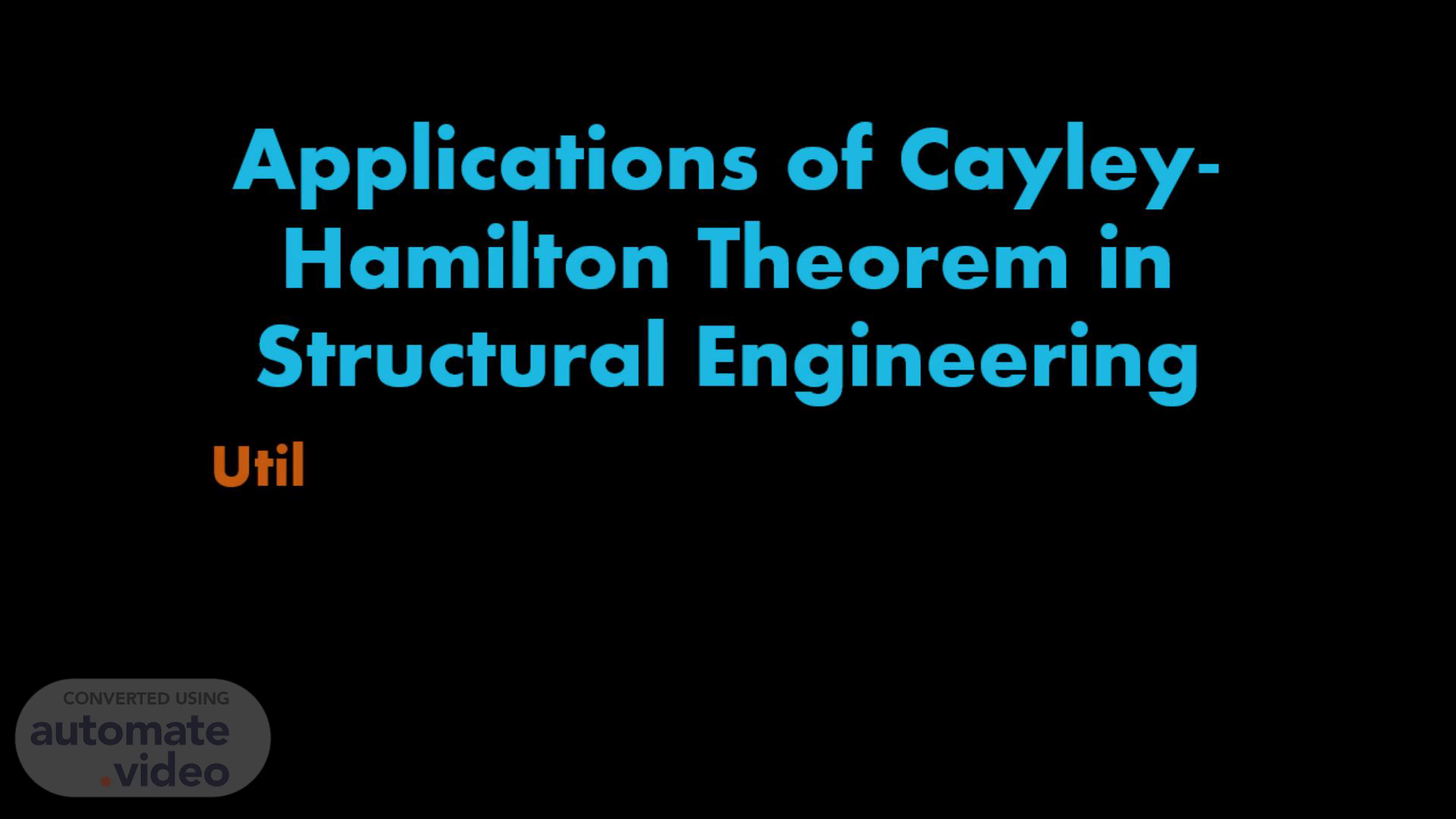
Applications of Cayley-Hamilton Theorem in Structural Engineering
Scene 1 (0s)
Applications of Cayley-Hamilton Theorem in Structural Engineering.
Scene 2 (10s)
Introduction to Structural Engineering. Skyscraper | Definition, Building, History, & Facts | Britannica.
Scene 3 (37s)
Matrices in Structural Analysis. Matrix Representations of Structural Elements Structural Element Beam Column Truss Member Plate Shell Matrix Representation [[EA/L, -EA/L], [-EA/L, EA/L]] [[EA/L, 0], [0, EA/L]] [[EA/L, -EA/L], [-EA/L, EA/L]] [[DII, D12], [D21, D22]] [[DII, D12, D131, [D21, D22, D23], [D31, D32, D33]].
Scene 4 (1m 8s)
Dynamic Analysis and Stability. Dynamic analysis studies structural behavior under dynamic loads, including natural frequencies and responses. Stability analysis ensures structures can withstand loads and maintain equilibrium. Differential equations govern structural dynamics, describing forces and responses. The Cayley-Hamilton theorem aids stability analysis by evaluating eigenvalues. Eigenvalues with negative real parts indicate structural stability..
Scene 5 (1m 26s)
Vibration Analysis and Modal Analysis. Introduction to Vibration Analysis Vibration analysis in structural engineering is vital for understanding structures' dynamic behavior, studying oscillatory motion, identifying natural frequencies, modes, and damping..
Scene 6 (2m 1s)
Structural Control and Optimization. Free Stock Photo of Futurisitc Building Design | Download Free Images and Free Illustrations.
Scene 7 (2m 19s)
Conclusion. Conclusion The Cayley-Hamilton theorem has proven to be a valuable tool in structural engineering, allowing for the analysis and design of complex structures. Its application has provided insights into the behavior and stability of various structural systems. Future Directions Further research and development in the application of the Cayley-Hamilton theorem can lead to advancements in structural engineering. Potential areas of future exploration include: Incorporating nonlinearity into the analysis and design process. Extending the theorem to consider dynamic behavior and vibrations. Developing more efficient algorithms for solving large-scale problems. Importance of Continued Advancements Continued advancements in linear algebra are crucial for the field of structural engineering. These advancements enable engineers to tackle increasingly complex and challenging design problems. By leveraging the power of linear algebra, structural engineers can optimize structures for safety, efficiency, and sustainability..